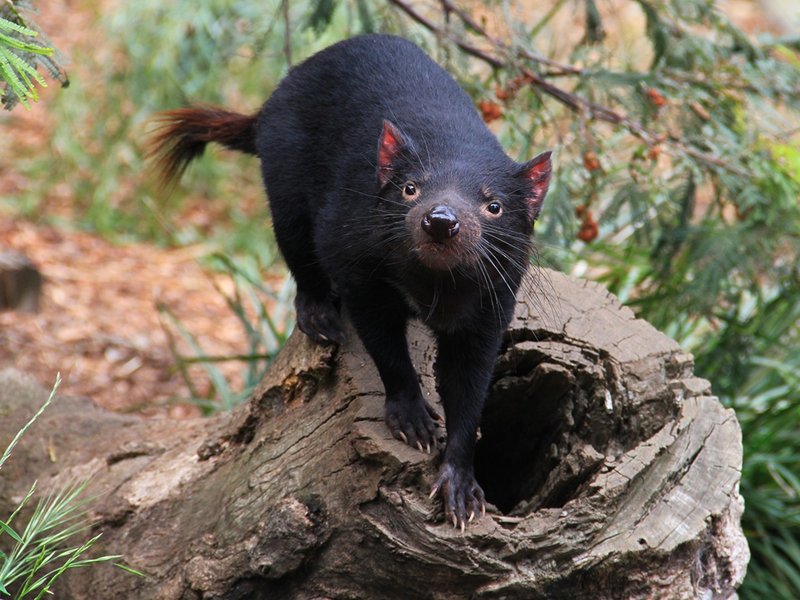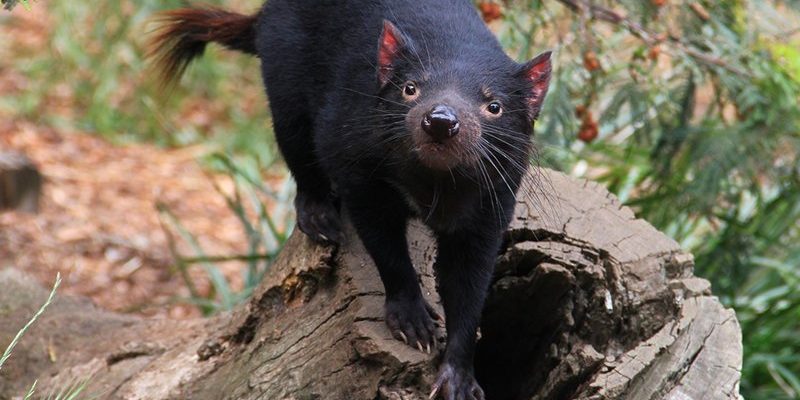
Like a shadowy figure in a captivating story, the Tasmanian Devil has both enchanted and intimidated people for generations. From Aboriginal legends that date back thousands of years to modern-day media portrayals, its role in culture is as diverse as its habitats. So let’s dive into how this intriguing creature has been represented through various lenses over time.
The Tasmanian Devil in Aboriginal Mythology
The Tasmanian Devil has a rich history in Aboriginal mythology, where it’s often viewed as a powerful creature. According to some legends, this animal is seen as a guardian of the underworld. The Tasmanian Devil is sometimes portrayed as a trickster, much like the coyote in Native American tales.
These stories often depict the devil as a creature that brings balance to nature. For instance, the devil is associated with death and decay, representing the idea that all life is interconnected. You might think of it as nature’s way of recycling. By taking on the role of scavenger, the Tasmanian Devil plays a critical part in the ecosystem, embodying themes of renewal and transformation through its life cycle.
Interestingly, these myths also reflect cultural values and beliefs about the environment. The way the Tasmanian Devil is woven into these narratives shows a deep respect for nature and a recognition of the animal’s important role in maintaining ecological balance.
Modern Media and the Tasmanian Devil
Fast forward to modern times, and the Tasmanian Devil is perhaps best known for its cartoon counterpart, Taz. This character burst onto the scene in the 1950s as part of the Looney Tunes franchise, instantly captivating audiences with his wild, whirlwind antics. Taz’s portrayal, while entertaining, often exaggerates the animal’s real-life characteristics, presenting it as a comical villain.
This representation has solidified a particular image in popular culture—one that might overshadow the actual qualities of the Tasmanian Devil. While Taz is a fun character, it doesn’t reflect the animal’s struggles in the wild today. That’s where the real Tasmanian Devil is facing challenges, such as habitat loss and disease. Modern media can serve as a double-edged sword; it raises awareness but can also lead to misunderstandings about the animal’s true nature and conservation needs.
The Tasmanian Devil and Conservation Efforts
You might be wondering why we should care about the Tasmanian Devil. It’s not just a quirky character from a cartoon; this species is crucial for its ecosystem. Its scavenging habits help keep the environment clean by consuming dead animals, which can prevent the spread of disease.
Conservation efforts are vital as this animal faces threats from disease, primarily a contagious cancer known as Devil Facial Tumor Disease (DFTD). Organizations and wildlife groups have been working tirelessly to ensure the survival of the Tasmanian Devil. These efforts include breeding programs, vaccinations, and habitat protection initiatives.
By raising awareness about the challenges the Tasmanian Devil faces, we can appreciate its role in our ecosystem and support its continued existence. Protecting the Tasmanian Devil not only helps preserve this unique species but also maintains the cultural stories that have been shared for generations.
The Tasmanian Devil in Literature and Art
Beyond mythology and media, the Tasmanian Devil has also inspired numerous works of literature and art. From children’s books to detailed documentaries, artists and writers have turned to this fascinating creature to explore themes of resilience and survival.
In literature, the Tasmanian Devil often appears as a symbol of wildness and untamed nature. For example, in certain stories, it embodies the spirit of the Australian wilderness, reminding readers of the beauty and brutality of nature. In art, the Devil’s fierce expression and unique physical features have attracted artists who seek to capture its essence, often portraying it in striking and emotional ways.
These creative representations contribute to a growing interest in the species, encouraging support for its preservation and a greater understanding of its ecological significance.
The Tasmanian Devil as a Cultural Icon
Today, the Tasmanian Devil has become a cultural icon in Tasmania and beyond. It symbolizes the unique wildlife found in Australia and serves as a reminder of the country’s rich natural heritage. Souvenirs, apparel, and tourism often feature the Tasmanian Devil, drawing both locals and visitors interested in experiencing its natural habitat.
Interestingly, the Tasmanian Devil also plays a role in local identity. For many Tasmanians, this creature represents a connection to their land and culture. Festivals and events centered around wildlife conservation often highlight the Tasmanian Devil, celebrating its significance and encouraging a collective responsibility towards protecting it.
In many ways, the Tasmanian Devil has become more than just an animal; it’s a symbol that resonates deeply with the culture and values of the people who live alongside it.
The Tasmanian Devil in Global Culture
The impact of the Tasmanian Devil stretches beyond Australia’s borders. It has been featured in various international conversations about wildlife conservation and the importance of biodiversity. As a unique species, it stands out in discussions about the threats facing many animals today.
In global culture, the Tasmanian Devil represents the idea that every creature, no matter how small, plays an important role in the ecosystem. This lesson resonates with audiences worldwide, reinforcing the idea that protecting our wildlife is crucial for maintaining the planet’s health.
By highlighting its struggles and triumphs, the Tasmanian Devil serves as a reminder of our shared responsibility to protect the delicate balance of nature.
As we’ve explored, the Tasmanian Devil is much more than just a fierce cartoon character. It is a complex symbol woven into the fabric of culture and folklore, representing deep-rooted beliefs, struggles, and triumphs. From its origins in Aboriginal myths to its role as a modern conservation icon, the Tasmanian Devil continues to inspire and engage people across the globe.
By understanding the cultural significance of the Tasmanian Devil, we can better appreciate its role in our ecosystems and commit to protecting it for future generations. So, the next time you see those wild whirlwinds on screen or hear the folklore stories, remember there’s a real creature with a rich history and an important place in our world.

